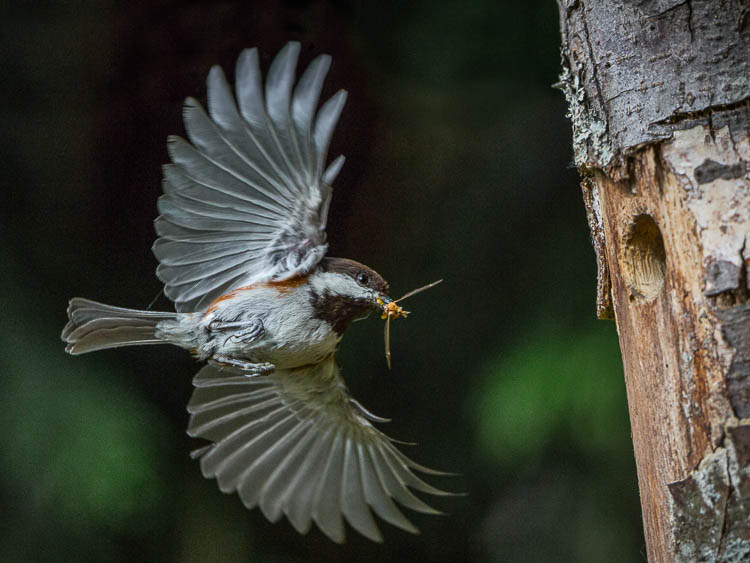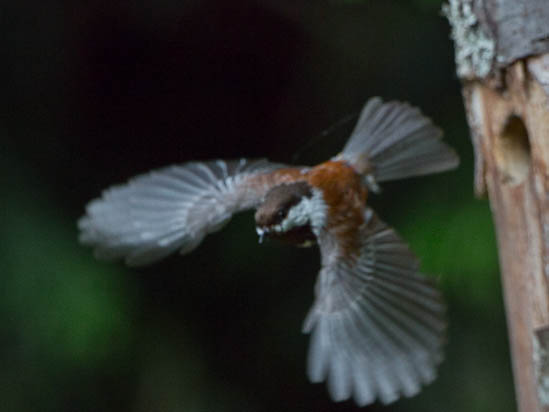
It’s prime bird photography time, and my backyard chestnut-backed chickadees had eggs that hatched in a homemade nesthole May 9th. It’s a good photo-op, sunlit in the late afternoon, and with birds that tolerate my nearby presence.
I shot a few “portrait-type” shots of the birds landing at the hole with bugs or grubs in bill with my 500mm f/4 and 25mm extension tube, and then backed up a bit to try for flight shots coming and going. An adult bird flew in every 3 to 5 minutes, so the wait between shots was bearable. Here’s how I set up for flight.
Firstly, for each session I balanced the heavy 500mm f/4 lens on a sturdy tripod, and plugged in a remote cable release (Canon TC-80N3) into my Canon 5D III. A sturdy tripod is a must for a big lens. Crucially, the remote allowed me to keep my eye off the viewfinder so I could see the birds as they approached the hole, well before they come into view had I used the camera’s veiwfinder. I turned off IS (image stabilization), focused manually, and put exposure in manual as well. I decided to use natural light, no flash. I wanted the most natural look.
After a few shots I adjusted the shutter speed to 1/2500s to freeze the eye and face, because I found at 2000s or slower I was getting movement for these fast-moving little birds. At 1/2500, I got a bit of blurred wingtips, but the eye — if I got it in focus — was sharp. The fast shutter need meant it was really only productive to shoot on sunlit or bright overcast afternoons. The sunlit, sidelit manual exposure I set at f/8, ISO 1600 for the f/4 lens to get a smidgen more depth of field. If a cloud passed in front of the sun, I adjusted the ISO upward to 3200. I opened up more if it got any darker. Darker still, I quit shooting.

